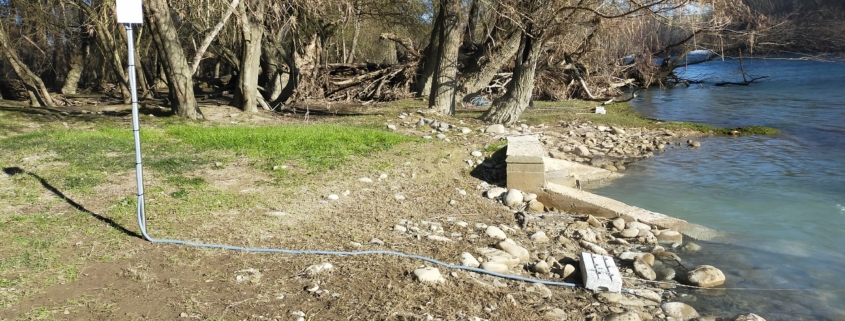The IVERGEST project installs a sensory network for the digitalisation of industrial waste.
Currently, there is no system on the market to monitor the effects of industrial discharges in advance, but the environmental and economic risks associated with these discharges are enormous. In this context, the IVERGEST project arises, whose objective is the development of a tool that monitors the effect of the spill on the receiving waterway in real time, which will allow decisions to be taken to minimise the impact of the spill if necessary.
The project partners, ZINNAE, Ideya, Arateck and FACSA, have the collaboration of the Ebro Hydrographic Confederation, which is interested in the results of the project and in the capabilities of the tool developed. This tool could be included among the best available technologies for activities subject to European and national regulations on integrated pollution prevention and control.
During the project, the digitisation of the discharge process of an industry will be carried out through the use of a hydrodynamic mathematical model and the development of prognostic algorithms. The system will be fed through a sensory network in the riverbed and at the discharge facilities, which has already been installed in the Aragon river by Arateck. In addition, this system will also integrate publicly available data such as those provided by the Automatic Hydrological Information System of the Ebro River Basin.
For its part, FACSA will contribute its experience in CFD (Computational Fluid Dynamics) simulations to evaluate the behaviour of the spill even in different riverbed conditions according to the hydrodynamic behaviour and knowledge of the orographic conditions. This information will be used for the development of predictive algorithms by Ideya that will be included in the digital tool for the monitoring and control of the industrial discharge in real time.
In this way, the software will make it possible to modify the conditions of the discharge by the industry to reduce its negative effect on the watercourse. The modification made to the discharge will depend on each situation, including actions such as: temporarily stopping the discharge, altering its frequency, modifying its flow and selecting other discharge points.
This project is subsidised thanks to the support aids for innovative business groupings of the Ministry of Industry, Trade and Tourism with the aim of improving the competitiveness of small and medium-sized enterprises, with File no: AEI-010500-2021-148.







